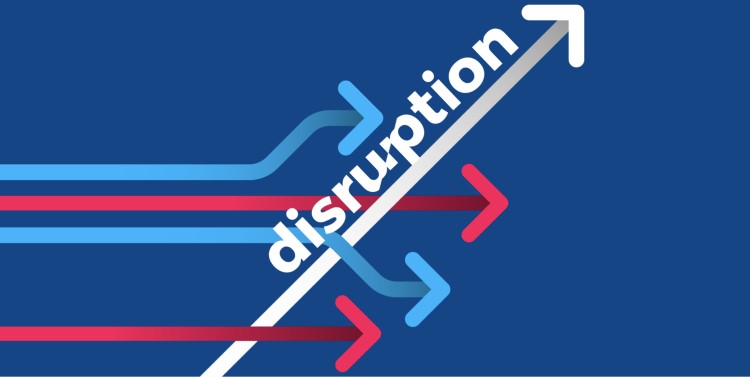How to Survive an Industry Disruption is a critical question for businesses facing the rapid changes that define today’s market landscape. Industry disruptions can arise from technological advancements, new business models, or shifts in consumer behavior, fundamentally altering the competitive environment. While disruption can create opportunities, it also poses significant risks to established players. However, with the right strategies, businesses can not only survive but also thrive during these periods of upheaval.
Understanding the Nature of Industry Disruption
To understand how to survive an industry disruption, businesses must first comprehend the forces driving change. Disruptions often originate from innovations that make existing products or services obsolete or less desirable. Companies like Netflix, Uber, and Amazon are prime examples of how disruptive innovations can reshape entire industries, leaving traditional players struggling to adapt. These disruptions often occur rapidly, leaving little time for businesses to respond. Therefore, companies must remain vigilant, constantly monitoring market trends and technological developments.
Moreover, industry disruptions are not limited to technology-driven sectors. Changes in consumer preferences, regulatory shifts, or global events can also trigger disruptions. For instance, the COVID-19 pandemic disrupted numerous industries, forcing companies to rethink their business models and adapt to new consumer behaviors. In such cases, businesses that can quickly pivot and meet new demands are more likely to survive and even prosper.
Building a Resilient Business Model
One of the key strategies for how to survive an industry disruption is building a resilient business model. Resilience in this context refers to a company’s ability to adapt to changes and recover quickly from setbacks. A resilient business model is flexible, scalable, and capable of evolving in response to external pressures. Companies that invest in innovation, diversify their revenue streams, and maintain operational agility are better positioned to withstand disruption.
Innovation is at the heart of resilience. Businesses must continuously innovate to stay relevant and competitive in a disrupted industry. This innovation can take many forms, from developing new products or services to rethinking existing processes. Companies that foster a culture of innovation are more likely to identify and capitalize on opportunities that arise from disruption. For example, during the rise of e-commerce, traditional retailers who invested in online sales channels were better able to compete with digital-native companies.
Diversification is another critical component of resilience. Relying on a single product, service, or market can make a company vulnerable to disruption. By diversifying their offerings, businesses can spread risk and create multiple revenue streams, reducing their dependence on any one area. This strategy not only helps mitigate the impact of disruption but also allows companies to explore new markets and opportunities.
Embracing Digital Transformation
Embracing digital transformation is essential for surviving an industry disruption. The integration of digital technologies into all aspects of a business can enhance efficiency, improve customer experiences, and open up new opportunities for growth. Digital transformation is not just about adopting new technologies; it involves rethinking how a business operates and delivers value to its customers.
In many cases, industry disruptions are driven by advancements in digital technology. Companies that fail to keep pace with these changes risk being left behind. For example, the shift from physical media to streaming services disrupted the entertainment industry, with companies that embraced digital transformation, like Netflix, emerging as leaders. Similarly, the rise of e-commerce has disrupted traditional retail, pushing companies to invest in online platforms and digital marketing strategies.
Digital transformation also plays a crucial role in enhancing operational agility. Businesses that leverage cloud computing, data analytics, and automation can respond more quickly to changes in the market. These technologies enable companies to scale operations up or down as needed, optimize supply chains, and make data-driven decisions. By embracing digital transformation, businesses can build the flexibility and responsiveness needed to navigate disruption successfully.
Focusing on Customer Needs
Understanding and meeting customer needs is a fundamental strategy for how to survive an industry disruption. Disruptive changes often arise from shifts in consumer behavior, with customers seeking new solutions that better address their needs. Companies that prioritize customer-centricity are more likely to retain their customer base and attract new clients, even in the face of disruption.
One of the most effective ways to stay attuned to customer needs is through continuous feedback and engagement. Businesses should actively seek input from their customers, using surveys, focus groups, and social media to gather insights. This feedback can help identify emerging trends and areas where the company may need to adapt. By being responsive to customer feedback, businesses can build stronger relationships and foster loyalty, which is crucial during times of disruption.
Additionally, offering personalized experiences can differentiate a company from its competitors. As consumers increasingly demand tailored products and services, businesses that invest in personalization can enhance customer satisfaction and loyalty. For instance, companies that use data analytics to understand customer preferences and behaviors can deliver more relevant recommendations, promotions, and communications. This level of personalization can be a powerful tool for retaining customers in a disrupted market.
Staying Agile and Adaptable
Agility is a critical factor in how to survive an industry disruption. In a rapidly changing environment, the ability to pivot and adapt quickly can make the difference between success and failure. Agile organizations can respond to new challenges, explore opportunities, and implement changes more rapidly than their competitors.
To build agility, businesses should adopt flexible processes and structures that allow for quick decision-making and execution. This may involve decentralizing authority, empowering teams to make decisions, and fostering a culture of experimentation. Companies that embrace agile methodologies, such as iterative development and continuous improvement, can better navigate the uncertainties of disruption.
Another aspect of agility is maintaining a strong network of partners and collaborators. By building strategic partnerships, businesses can access new resources, technologies, and expertise, enhancing their ability to adapt to disruption. Collaboration with other companies, research institutions, and industry organizations can also provide valuable insights and opportunities for innovation.
Conclusion
Understanding how to survive an industry disruption is essential for businesses in today’s volatile market environment. By building a resilient business model, embracing digital transformation, focusing on customer needs, and staying agile, companies can not only survive but also thrive during times of disruption. While industry disruptions can be challenging, they also present opportunities for growth and innovation. Businesses that are proactive, adaptable, and customer-focused will be better positioned to navigate these challenges and emerge stronger on the other side.


